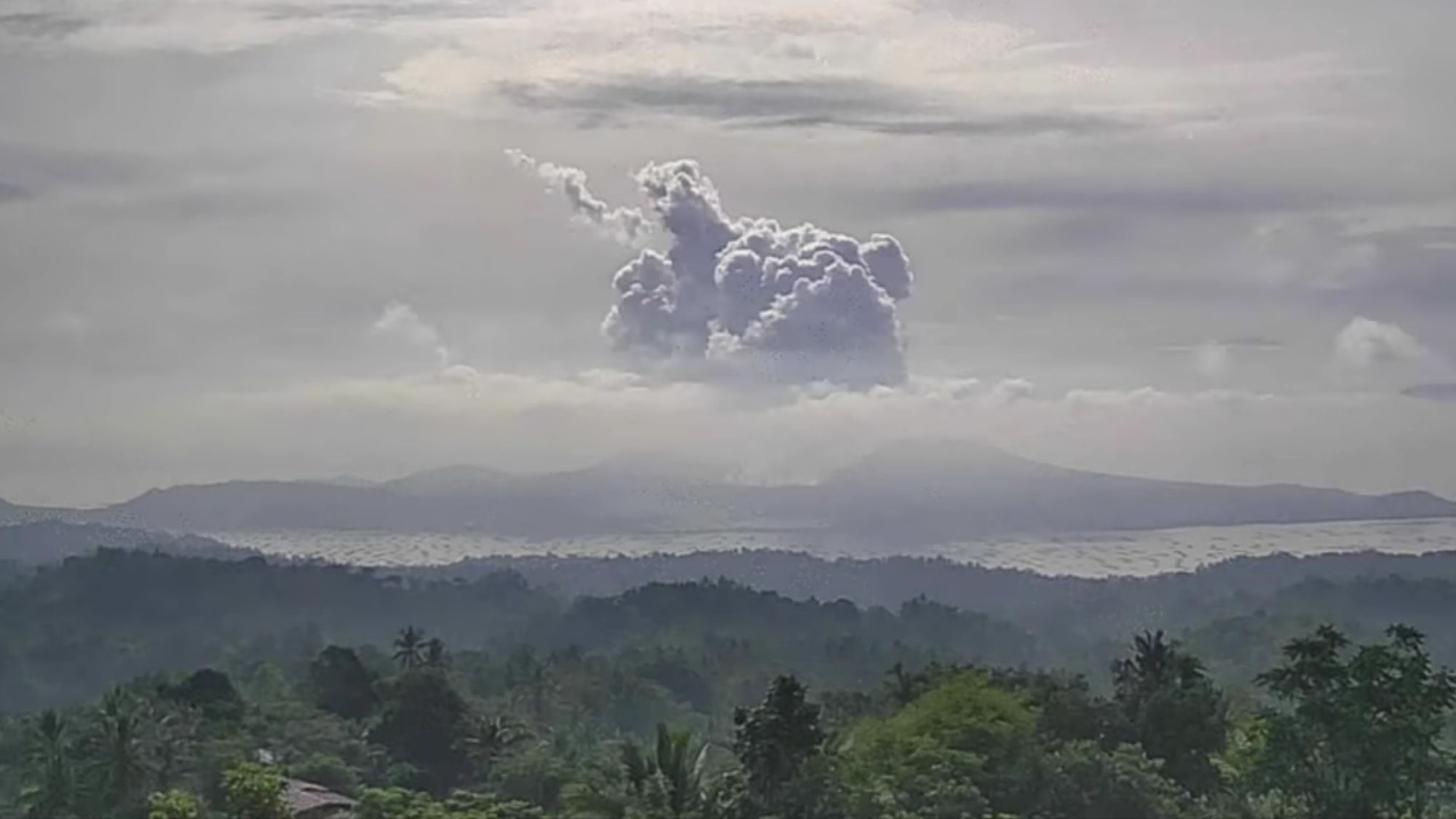Phivolcs is warning residents living near Taal Volcano to watch out for chemicals being spewed from the volcano that may cause eye, throat, and respiratory tract irritation.
STO TOMAS CITY– RESIDENTS living near Taal Volcano were warned by the Philippine Institute of Volcanology and Seismology (Phivolcs) on Saturday (12 June 2021) to take the necessary precautions, as high levels of sulfur dioxide (SO2) emission were detected.
Strong odor
Sulfur dioxide is a colorless, reactive air pollutant with a strong odor. This gas can be a threat to human health, animal health, and plant life.
The main sources of sulfur dioxide emissions are from fossil fuel combustion and natural volcanic activity.
Sulfur dioxide irritates the skin and mucous membranes of the eyes, nose, throat, and lungs.
High concentrations of SO2 can cause inflammation and irritation of the respiratory system, especially during heavy physical activity.
The resulting symptoms can include pain when taking a deep breath, coughing, throat irritation, and breathing difficulties.
SO2 effects
High concentrations of SO2 can affect lung function, worsen asthma attacks, and worsen existing heart disease in sensitive groups.
People sensitive to sulfur dioxide include those with lung diseases, such as asthma, chronic bronchitis, and emphysema.
Children are also at higher risk from SO2 exposure because their lungs are still developing. They are also more likely to have asthma, which can get worse with SO2 exposure.
Older adults may be more affected by SO2 exposure, possibly because they are more likely to have pre-existing lung or cardiovascular disease.
Affected residents
High levels of SO2 aerosol over the western Taal Caldera affected residents in at least three barangays of the municipality of Agoncillo, including Banyaga, Bilibinwang, and Subic Ilaya.
They reportedly experienced throat irritations and observed sudden dry-out or vegetation kill in crops, plants, and trees after a period of rain.
"These observations were reported to us by the municipal agricultural office and (are) currently under further investigation," Phivolcs said.
The high SO2 level is unprecedented, Phivolcs chief Renato Solidum said.
Phivolcs advisory
In an advisory, Phivolcs said the highest SO2 emission ever recorded for Taal averaged 9,911 tons per day last June 10, and Solidum said the high SO2 emission persists.
The SO2 gas emissions from the Taal Main Crater have been measured by "campaign UV spectrometry" around the Taal Lake shore, based on the advisory.
The ultraviolet spectrometry instrument, he said, measures SO2 emissions and is transported on a vehicle that would run along the lakeside road around the Taal Lake to track the steam and gas plume.
Warning
Should these observations persist, Phivolcs said communities west and north of the Taal Volcano Island (TVI) may experience the effects of volcanic SO2.
Phivolcs advises individuals to limit their exposure and move away from the area where volcanic gas can be sensed.
Solidum stressed the public is only being warned to protect themselves from SO2 fumes but Phivolcs is not necessarily advising them to opt for evacuation.
He, however, also noted that the threat of phreatic eruption or steam-driven explosion persists at alert level 2 (increased unrest). (IA)
Tags: #OpinYonBatangas, #TaalVolcano, #Phivolcs, #sodiumdioxide
